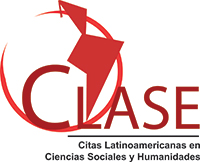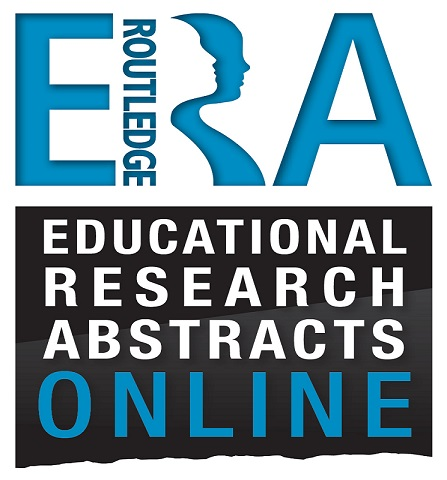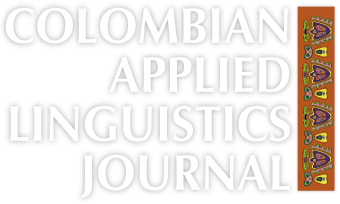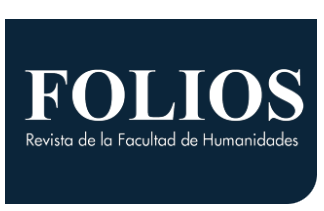
Published
The Co-Construction of Participation Through Oral Mediation in the EFL Classroom
La co-construcción de la participación a través de la mediación en el aula de lengua extranjera
DOI:
https://doi.org/10.15446/profile.v18n1.49948Keywords:
Discourse moves, interaction, oral participation, mediation (en)herramientas discursivas, interacción, mediación, participación oral (es)
https://doi.org/10.15446/profile.v18n1.49948
The Co-Construction of Participation Through Oral Mediation in the EFL Classroom
La co-construcción de la participación a través de la mediación en el aula de lengua extranjera
Jose David Herazo Rivera*
Anamaría Sagre Barboza**
Universidad de Córdoba, Montería, Colombia
*jherazo@correo.unicordoba.edu.co
**asagre@correo.unicordoba.edu.co
This article was received on April 1, 2015, and accepted on July 28, 2015.
How to cite this article (APA 6th ed.):
Herazo Rivera, J. D., & Sagre Barboza, A. (2016). The co-construction of participation through oral mediation in the EFL classroom. PROFILE Issues in Teachers' Professional Development, 18(1), 149-163. https://doi.org/10.15446/profile.v18n1.49948.
This is an Open Access article distributed under the terms of the Creative Commons license Attribution-NonCommercial-NoDerivatives 4.0 International License. Consultation is possible at http://creativecommons.org/licenses/by-nc-nd/4.0/.
Sociocultural theory argues that an individual’s mental, social, and material activity is mediated by cultural tools. One such tool is the language or discourse teachers use during whole class interaction in the second language classroom. The purpose of this study was to examine how a Colombian se-cond language teacher mediated her ninth-grade students’ participation during classroom interaction. We videotaped and transcribed five lessons and interviewed the teacher after each lesson. Findings revealed that the teacher mainly used questions, elaborations, recasts, and continuatives in patterned combinations to help learners co-construct relevant content and sustained participation. Such mediation provided learners with frequent affordances to engage in meaning-making, a necessary condition for developing a new language.
Key words: Discourse moves, interaction, oral participation, mediation.
La teoría sociocultural argumenta que las herramientas culturales median la actividad mental, social y material de una persona. Una de estas herramientas es el habla o discurso del profesor(a) en interacción con sus estudiantes durante la clase. Esta investigación analizó la forma como una profesora de segunda lengua medió la participación de sus estudiantes y las implicaciones de dicha mediación. Se realizaron cinco observaciones de clase seguidas de entrevistas a la profesora. Los resultados muestran que la profesora utilizó principalmente preguntas, elaboración, reformulación correctora y continuativos para la co-construcción de contenido y participación de los estudiantes. Dicha mediación ayudó a los estudiantes a construir significado, condición necesaria para aprender una nueva lengua.
Palabras clave: herramientas discursivas, interacción, mediación, participación oral.
Introduction
In sociocultural theory, a more capable other such as the teacher is often called to play a major role in promoting a novice’s learning and development by providing mediation or help (Vygotsky, 1978). Although in the field of second language acquisition (SLA) this concept has been explored by a variety of research (Hall & Verplaetse, 2000; Lantolf, 2000; Lantolf & Thorne, 2006), several crucial topics appear to be still underrepresented. Notable omissions include the semiotic tools through which mediation occurs (Ohta, 2000a) and the way the second language (L2) mediation is shaped by cultural-historical, sociocultural, ontological, and microgenetic influences. In this paper, we shed light on these two crucial topics by investigating (a) the focus of the mediation provided by the teacher, (b) the time at which such mediation was provided, and (c) the specific discourse tools that the teacher used to mediate learners’ English as a foreign language (EFL) oral participation during whole class interaction.
In the first section of the paper, we discuss the concept of mediation and review some of the research on mediated L2 learning during teacher-student interaction. Next, we describe the methodology for data collection and analysis and present the findings. In the last section, we present the implications of these findings for professional development.
Conceptual Framework
The concept of mediation derives from Vygotsky’s view that an individual’s activity, whether mental, social, or material, is shaped by cultural tools and signs that have been historically created (Vygotsky, 1978, 1986; Wertsch, 2007). That is to say, an individual’s relationship with the world and others is not direct, but rather mediated through various types of signs that have been inherited from others, learned, and often transformed through recurring cycles of specific cultural and social practices. Based on this orientation, mediation is understood in this paper as a self-directed or other-directed process resulting in voluntary control over one’s social and mental activity thanks to the use of cultural artifacts, concepts, and signs (Lantolf & Thorne, 2006). Most notably, mediation often occurs through linguistic means and takes the form of linguistic guidance of participation (e.g., providing verbal cues or using assisting questions of various kinds). In this paper, our focus is on verbal mediation provided by the teacher to assist learners as they interact in the EFL during whole-class activities. Since learners’ use of English in Colombia occurs almost exclusively in the classroom, focusing on teacher mediation is crucial for understanding the dynamics of EFL learning in the Colombian context.
L2 Teacher-Student Interaction as a Mediated Activity
Sociocultural research in SLA has focused on a variety of topics including private speech (Appel & Lantolf, 1994; Ohta, 2000a, 2000b), other-regulation (Antón, 1999; Donato, 2000; McCormick & Donato, 2000), the zone of proximal development (ZPD) and scaffolding (Aljaafreh & Lantolf, 1994; Donato, 1994; Guk & Kellog, 2007), and dynamic assessment (Lantolf & Thorne, 2006; Poehner & Lantolf, 2010). One of the most compelling findings of such research is that SLA can be conceived as social in origin, semiotic in nature, and instantiated in mediated interactions with others. In addition, this research also shows that teachers’ discourse (what they say, how they say it, how they respond, etc.) is consequential to language learning and development. For example, Aljaafreh and Lantolf (1994) and Ohta (2000b) investigated the verbal moves used by a teacher or tutor to provide corrective feedback and the way those moves mediated L2 development. The first study looked closely at the cognitive functions of the mediator’s utterances, whereas the second studied the extent to which learners repeated teacher recasts softly to themselves (i.e., private speech) after the teacher gave feedback to other students. Aljaafreh and Lantolf’s (1994) findings show that mediation needs to be provided as learners show signs that they need help (i.e., it needs to be contingent) and that mediation must start at the most implicit forms of support, becoming more explicit if learners continue to require help (i.e., it should be graduated). Ohta (2000b) extended this discussion and demonstrated that a learner’s private speech can be an important indicator of the effectiveness and saliency of teacher mediation. Her research suggests that private speech during whole class interaction may be one indicator of effective mediation that promotes learner assimilation and expansion of new language elements. Research on dynamic assessment in the context of L2 learning is also fundamentally grounded in this basic assumption of Vygotskyan theory (Lantolf & Thorne, 2006).
Other studies have demonstrated that mediation has a positive effect on students’ L2 learning. These studies have shown that teachers’ utterances are more than ways to provide input or elicit output, that well managed discursive forms of teacher mediation support cognition and linguistic development in the context of tasks and instructional goals (Gibbons, 2003; Toth, 2011), that this mediation can potentially create whole class and small group ZPDs (Antón, 1999; Guk & Kellog, 2007), and that it may serve as scaffolding and dynamic assistance (McCormick & Donato, 2000).
The specific tools of mediation reported in the SLA literature are diverse, confirming Kozulin’s (2003) and Vygotsky’s (1978) claims that the forms of adult mediation vary greatly. In addition to questions (McCormick & Donato, 2000) that teachers deploy are included functional recasts (Mohan & Beckett, 2003), negotiation of meaning requests (Gibbons, 2003), repetition, demonstrations, translation, metalinguistic comments, and the initiation of a solution that learners must complete (Guk & Kellog, 2007).
Although many of the previous studies argue that L2 learning in the classroom can be mediated by teachers’ discourse, this research has focused primarily on studying the development of learners’ linguistic system rather than on examining how teacher mediation sustains learners’ participation in meaningful interactions. For example, previous studies have focused on article use, tense and aspect, use of prepositions, and modal verbs (Aljaafreh & Lantolf, 1994), verb meanings (Ohta, 2000b), and vocabulary (Guk & Kellog, 2007). Two exceptions to this observation seem to be Mohan and Beckett’s (2003) and Gibbons’ (2003) studies that described how learners’ meaning-making capacity expanded from congruent (non-academic) to non-congruent (academic) discourse realizations (Halliday & Matthiessen, 2004), and how content, meaning, and form in the English as a second language (ESL) content-based science classroom were functionally related. The goals of previous research seem to have been, then, to study how more capable others mediate learners’ development of the language system, rather than how this mediation helps learners to participate in whole class interactions. Thus, this study assumes a broader perspective on mediation that focuses on the discursive ways in which the teacher attempts to support student participation and the production of relevant content during teacher-student interaction. This study addressed three complementary questions: (1) What discourse tools did Kelly1 use to mediate learners’ oral participation in the L2? (2) What was the focus of those discourse tools? (3) At what time during the interaction did Kelly provide mediation through those tools?
Method
This study followed a naturalistic line of inquiry (Richards, 2003) to analyze how a Colombian teacher named Kelly mediated her learners’ L2 participation during whole class discussions through various discursive tools. Unlike experimental research that seeks to discover cause-effect relationships by controlling variables, this case study (Duff, 2008) can be considered naturalistic because it took place in the natural context of Kelly’s ninth-grade classroom and did not require any change in how Kelly usually taught her lessons.
Participants and Context
Kelly, the participant of this case study, is an English teacher at a low-income state school in an urban area of Sincelejo, Colombia. Kelly volunteered to be part of the study after an open email call that was sent to teachers who had not been trained by the Colombian national bilingualism program. Before the study, Kelly was informed that the study would focus on how she and her students talked during lessons and that the study would not alter the way she taught her lessons. Both Kelly and the students’ parents agreed to participate in the study and provided signed informed documents of consent.
At the time of the study, Kelly had taught English for about ten years and held a degree in second language teaching and a specialization in translation. She also had a C2 proficiency level in English according to Oxford’s quick placement test (Oxford and Cambridge ESOL, 2002),2 which allowed her to engage in fluent conversation in English about a wide variety of topics. Kelly taught two English lessons per week to her 42 ninth-grade students, one hour on one lesson and two hours on the other lesson. Kelly and her students do not have a textbook that they use for their lessons; rather, they use selected sections from a textbook that Kelly chose, which they photocopy before lessons start. As is common practice in her school, Kelly was the one responsible for choosing this textbook and for deciding which sections from the book to use.
At the moment of this research, Kelly had not been part of any course or seminar offered by the Ministerio de Educación Nacional (MEN, Ministry of Education) within the Programa Nacional de Bilinguismo (PNB, National Bilingualism Program) (MEN, 2005). Although Kelly had become familiar with the goals of the PNB as part of her school work, she had not been exposed to the L2 teaching methodology promoted by the PNB, which sought to enable EFL teachers to interact meaningfully with learners, mediating their oral participation through appropriate discourse strategies such as content-oriented questions. However, such orientation to communication was common in the L2 courses Kelly taught at night at a private university.
For this study, we focused on Kelly’s interactions with her ninth grade students, a group of 42 mixed-gender learners whose ages ranged from 13 to 16 years. As is common in Colombian classrooms (Herazo & Donato, 2012), Kelly’s ninth graders had a low beginners’ oral L2 ability, which allowed them to express only basic functions such as greetings, introductions, and simple descriptions provided they had sufficient help from the teacher. All students in Kelly’s ninth-grade class belong to low-income households, most of them located around the school.
Data Sources
We observed Kelly for six hours during five lessons in May 2011. Kelly’s purpose for these lessons was to promote student participation during classroom interaction about teenagers’ issues and their consequences. We kept field-notes during lessons, collected artifacts, and videotaped and audio-recorded all lessons. We did three lesson observations before data collection to get learners familiar with being recorded and thus ensure that recording procedures did not significantly alter usual teacher-student interaction patterns. For the audio recording, we used a digital recorder with a clip microphone on Kelly’s collar that she carried at all times during the lessons. After each lesson, we identified and transcribed for future analysis a corpus of 25 episodes from whole-class teacher-student interaction (transcription conventions appear in Appendix A). In all cases, the purpose of the teacher during those interactions was to promote students’ oral participation in the L2 to talk about various topics, such as student problems or vacations. The interactions usually followed reading or listening activities in which those topics had been introduced.
We also used the transcribed episodes for stimulated recall protocols (SRPs) (Gass & Mackey, 2000) that took place in Spanish, Kelly’s L1, within two days after each lesson. The stimulated recall sessions consisted of an interview based on the video of each lesson and focused on Kelly’s rationale for the various discourse tools she used. The SRPs were conducted posing questions3 such as: What was your purpose with that question? Do you often ask “why” of your students after they provide an opinion? In this part of the video you said “uh huh” after a student’s response, what led you to use that expression?
Data Analysis
Talk is one of the major tools we possess to create relationships of various kinds, be they social, professional, or instructional. For this reason, conversations between teacher and learners and learners with each other constitute an opportunity to observe how classroom talk promotes or mediates learning (Ohta, 2000a; van Lier, 1996). Our focus in this study is on Kelly’s discourse moves, their intentions during whole class interaction, and how these moves served to facilitate or limit students’ meaningful participation in the L2. We used the software Nvivo 10 (QSR International) to organize and code 228 of Kelly’s discourse moves as well as data coming from the SRP. Analysis was based on the categories defined by Herazo and Donato (2012) to address the focus, time, and tools of mediation Kelly used in her L2 interactions with learners. Inter-rater reliability checks for these codes yielded a Kappa agreement of 0.82, 0.83, and 0.90 for the categories of focus, time, and tools, respectively.
Following Herazo and Donato (2012), we used three categories for coding the focus of Kelly’s mediational moves, namely focus on meaning (i.e., mediational moves addressed to the content of learners’ utterances), focus on affect (i.e., mediational moves that encouraged learners’ to say more or aimed at reducing their speaking anxiety), and focus on language (i.e., mediational moves that focused on learners’ production of accurate lexis and grammar). Concerning the time of mediation, we used the categories proactive mediation, for those discourse moves that oriented learners’ attention to their forthcoming participation, pushed them to say more, or set up expectancies (van Lier, 1996) for the content or form of what they would say. We used the category ongoing mediation or “procedural assistance” (Toth, 2008) for those discourse moves that occurred midway between learners’ attempts to formulate an utterance. Finally, we used reactive mediation for teacher’s supportive moves that oriented learners’ attention to what they had just said, either to the formal aspects of their utterances or to their meaning. To analyze the tools of mediation (i.e., the types of discourse move Kelly used), we used eleven categories, such as recasts, follow-up questions, forced-choice questions, provision of example options, elaborations, and continuatives. Most of these categories have been reported in the existing sociocultural and SLA literature, thus they will not be explained here (see Appendix B). The SRP provided self-reported reasons for Kelly’s discourse moves. The SRP data were analyzed through constant comparison (Strauss, 1987) to allow for the identification, confirmation, or disconfirmation of recurrent patterns of mediation in the data.
Findings
We present findings in terms of the tools, focus, and time dimensions of mediation. We will use only two interaction episodes given the fine-grained level of detail that was required for the analysis. By no means does that mean that our findings are solely based on those two episodes. Rather, our intention is to illustrate the complex patters that were found for all the 25 episodes of the corpus, which will be presented in more quantitative terms at the end. Rather than seeking quantitative representativeness with our analysis, our goal is to show the variability and patterns of mediation that were present in Kelly’s discourse.
Kelly as Mediator
Kelly’s mediation throughout the 25 interaction episodes of our data was mainly proactive and focused on meaning. That is to say, Kelly’s mediating utterances were primarily aimed at promoting learners’ continued participation, and were oriented toward the content of what learners said rather than to its form. As we illustrate below, albeit with only two episodes, Kelly used various discursive tools that she skillfully combined to mediate learners’ participation in the L2. Episode A occurred after Kelly and her students had been discussing the problem of adolescent drug addiction, using the example of a learner who left school due to this problem. However, learners shifted the topic from drug addiction to reasons why learners dropped out of school, a topic shift that Kelly realized only until turns 14 and 15 came up.
Episode A
- Kelly: so, tell me WHY, is only about problems? is only about companies? Or is about MY DECISION
- Rene: money
- Kelly: is about money?
- Pedro: is my decision
- Kelly: money is another factor?
- Luis: no
- Kelly: money is another factor?
- SS: yes, yes
- Kelly: why? why?
- Nico: yo creo que si ((I think so))
- Kelly: why? why? is it important?
- Nico: la necesitan en el colegio para trabajar ((they need it in school, to work))
- Kelly: if you work you get drugs?
- Alex: no teacher, quieren estudiar y no tienen la posibilidad de negociar ((they want to study and don’t have the chance to do business))
- Kelly: uh hu? they don’t have the?
- S?: possibility
- Kelly: possibility they don’t have the possibility
- Luis: teacher
- Luis: in the work don’t affect
- Kelly: uh huh?
- Luis: osea porque::: ((I mean because::))
- Kelly: why::?
- SS: ((giggles))
- Luis: is, two jornal ((jornal: one section of the day, morning or afternoon))
- Kelly: yeah?
- Luis: in ... in a one jornal work, in the ot- in the other jornal::: study
- Kelly: uh huh?
- Kelly: oh:: so:: they can study?, so according to Luis, money is not a factor because...in the morning they can study? and in the afternoon? in the afternoon?
- Luis: work
- Kelly: they can? work... in the afternoon? they can work, okay
In Episode A, Kelly used proactive mediation to promote learners’ participation that focused on meaning rather than form. To that end, she provided interactional support in advance of the learners’ responses followed by meaning-focused questions that sustained learner participation. For example, in turn 1, she gave learners contrasting options from which to choose, which resulted in an answer from Rene (turn 2) consisting only of the last part of the clause or residue (money),4 and another response from Pedro in turn 4. Kelly reacted to Rene’s response with a follow-up question requesting confirmation (turn 3, 5, and 7), focusing on the meaning of Rene’s statement rather than on the fact that it consisted of a single-word reply. Once the entire class confirmed Rene’s answer (turn 8), she asked a follow-up question demanding justification (turn 9: why? why?). Because Nico answered in Spanish, she asked the same question again (turn 11) and then made it more specific by using a yes/no interrogative instead of a wh- question (turn 11: is it important?). Kelly’s mediation allowed Nico to continue his answer, still in Spanish (turn 12), and Kelly responded with another verification request (turn 13). As Kelly reported during the SRP, she purposely intended to make learners “feel they could participate in conversations in the L2, even if their participation had language errors or occurred in Spanish sometimes.” Her goal for meaningful participation explains why she reacted to the content of Nico’s answers in turn 10 and 12 with a justification request (turn 11) and a confirmation request (turn 13), even though the learner’s utterances were in Spanish. In this way, she implicitly accepted these contributions as valid for the ongoing conversation and mediated student participation for meaning over form.
In addition to meaning, Kelly also focused on form on several occasions (turns 14 to 17 and turns 28 to 30). Interestingly, Kelly’s focus on form occurred through reactive mediation, only after learners had conveyed their meaningful contribution to the topic of interaction. For example, Kelly provided an incomplete translation (turn 15: they don’t have the/) to Alex’s response in L1 (turn 14), which she ended with rising intonation to cue students to complete it. This cue was taken up by one learner who provided the missing word in turn 16 (possibility), allowing Kelly to incorporate the word into a full clause (turn 17: they don’t have the possibility). As the SRP revealed, Kelly’s intention was to send the subtle message that participation in L2 was required and to model, without explicit correction, the form-meaning mapping needed. This same form-focused, reactive pattern was repeated from turns 28 to 30, where Kelly’s mediation served to edit learners discourse, illustrating acceptable forms for expressing particular L2 meanings.
The third recurring pattern of mediation is Kelly’s attention to learner affect. This occurred from turns 15 to 27 and was mainly realized by the continuative uh hu (turns 15, 22, 25, and 27), with rising intonation as a way to show interest and encourage elaboration. This form of mediation appeared to have prompted Luis to engage in sustained participation over several turns, while attempting the complex formulation: “in the work don’t affect [because] is two jornal, in one jornal [students can] work in the other jornal [they can] study.” Kelly confirmed this interpretation of her use of continuatives in the SRP, where she said she used uh hu to mean “go on, I’m listening” and encourage learners to continue talking.
The previous patterns of mediation can also be observed in Episode B below. However, in this new episode Kelly used additional mediational tools. Episode B was taken from the first lesson in the unit, after the Easter vacation period. Kelly welcomed students and started talking to them to find out how students had liked Easter vacation.
Episode B
- Kelly: ah- just tell me one thing (.2) how did you, spend your vacations, how were your vacations, tell me about your vacations (.2) did you have a good time on vacations?
- S?: ye:::s?
- Kelly: how many weeks did you have? how many weeks? I had two ((shows two fingers)) vacations, two weeks
- Rene: three
- Ana: Three
- Kelly: how many weeks did you have?
- Rene: Three
- Ana: Three
- Kelly: three weeks, did you have FUN? ((thumbs up with both hands, as saying okay)) did you have FUN on vacation?
- SS: ye:::s
- Luis: más o menos
- Alex: so so
- Kelly: so so why? tell me why tell me why why you say yes and- tell me why you say NO::
- SS: ((no reply...a silent period of about 5 seconds))
- Kelly: Why? give me the reason (.3) someone said NO TEACHER, why? Alex why, you said no::: so so ((imitates student’s voice)) why?
- Alex: [because], don’t, travel
- Kelly: uhuh
Kelly’s focus on meaning and affect through proactive or ongoing mediation was maintained in this episode. Indeed, Kelly continued to attend to the content of students’ utterances proactively (e.g., turn 9) and also encouraged learners participation with expressions such as uhuh, to show that she is paying attention to what learners are saying (turn 17). However, she used additional discourse tools to achieve those mediational purposes. For instance, in turn 1 she asked two open questions in succession (how did you spend your vacations? and how were your vacations?) which she then turned into an imperative (tell me about your vacations) and then into a yes/no question (did you have a good time on vacations?) to facilitate student participation (see also turns 13 and 15). In addition, she provided models of how students should respond to her follow-up, meaning-oriented questions. For example, she answered her own question with a model response (I had two vacations, two weeks, turn 3). This encouraged students to respond (turns 4 and 5), albeit using only the final part of the clause or clause residue (i.e., three), which Kelly recast to mediate form (three weeks, turn 6). Then, Kelly continued with the conversation by focusing on meaning through a follow-up question (did you have FUN?), a form of proactive mediation focusing on meaning. Kelly’s focus on meaning in this episode can also be seen in that she emphasized the meaning of key words in her utterances using gestures that added to students’ comprehension (e.g., turn 3 and turn 9). The results of our analysis for all of Kelly’s episodes appear in Table 1.
Table 1 as well as Episodes A and B show the patterns of Kelly’s mediation throughout the corpus data. Kelly’s mediation focused primarily on meaning (57%) and occurred proactively through her use of follow-up questions that advanced the topic, elaborations of her own questions, and questions that provided options for students to respond to. Her focus on students producing accurate language represented approximately one-third of her mediation (29%) and occurred reactively, that is, after students attempted to say something. To that end, Kelly purposely used recasts and incomplete sentences ending in rising intonation. Her focus on language addressed morphosyntax and lexis in similar proportions, and targeted whole phrases or clauses to construct specific meanings. Kelly’s mediation of affect was her least common form of mediation (14%), which she realized with continuatives to support ongoing participation. In sum, Kelly’s mediation took various forms, though it was primarily focused on meaning, proactive, and driven by her belief that students should first produce meaning before addressing language forms.
Discussion
Kelly’s continued use of various discourse tools that advance topic development oriented learners’ attention to meaning and sustained participation since she used them as “dynamic discursive tools [used] to build collaboration and to scaffold comprehension and comprehensibility” (McCormick & Donato, 2000, p. 197). For instance, rather than asking for information she already knew, Kelly’s questions aimed at engaging students in the co-construction of meaning. Kelly’s correction of learners’ mistakes was mostly implicit, focusing on the meaning of learners’ utterances continually, and recognizing learners as valid interactive participants despite their frequent use of L1. In our view, this type of interactional activity not only matches current Colombian goals, but seems to provide learners with frequent affordances to engage in meaningful participation during lessons, a necessary condition for L2 development (van Lier, 2004).
The various discursive tools of mediation that we found in Kelly’s talk confirm Kozulin’s (2003) position that mediation is not a unitary, undifferentiated activity. Rather, our findings for Kelly indicated that teachers may deploy a variety of discourse tools in patterned combinations as they interact to construct meaning with their students. Although a variety of studies have demonstrated the value of individual forms of teacher discursive mediation for student L2 learning (Gibbons, 2003; Guk & Kellog, 2007; McCormick & Donato, 2000; Mohan & Beckett, 2003), it is our contention that such value may be better understood when those forms of mediation are studied as part of a system and deployed by the teachers at different times to suit their instructional goals.
L2 classroom discourse has historically been dominated by triadic interaction patterns such as the initiation-response-evaluation sequence (Mehan, 1985). One of the criticisms leveled at such sequence is that it gives teachers the most talking opportunities in the interaction and constitutes a closed format in which students contribute little and hence learn little (Thoms, 2012). Contrary to this, Kelly’s use of various mediation tools allowed her to realize a pattern of discourse that was interactive and dialogic (Davin, 2013; van Lier, 1996) and in which students’ contributions were valued for their content without necessarily neglecting their linguistic features. In our view, such result was due to Kelly’s patterned combination of various forms of discursive mediation with an orientation to helping students produce meaning before focusing on the linguistic form of what they said. One lesson to be learned from this is that teachers’ attempts at making their interactions with learners more dialogic and participatory need to start with the awareness that their discourse plays a major role in mediating students’ learning, especially when different forms of teacher discursive mediation are combined purposefully and meaningfully.
Another intriguing insight that can be derived from this study refers to the way in which Kelly handled students’ use of the L1 during their interactions in the L2. Indeed, instead of restricting students’ L1 use, Kelly took their L1 responses to engage them in using the new language. In our view, such decision legitimated students as valid participants that provided relevant content to the unfolding interaction, which was then mediated by Kelly through translation to encourage L2 production. Unlike input-based approaches to L2 learning that preclude L1 talk in the classroom (VanPatten & Leeser, 2006), Kelly’s acceptance of students’ L1 use aligns with current sociocultural approaches that see L1 and L2 as both cognitive and communicative resources to promote L2 learning in classrooms (Creese & Blackledge, 2010; Donato & Lantolf, 1990; Swain & Lapkin, 2000).
Conclusions and Recommendations
The purpose of this investigation was to explore the ways in which a teacher mediated her ninth-graders’ oral participation during whole-class interaction in an English as a foreign language classroom. To this end, the study adopted the concept of mediation from sociocultural theory to describe the focus, time, and tools used by the teacher to provide mediation. Findings from this investigation revealed that the teacher used a variety of discourse tools mainly addressed towards helping learners participate meaningfully in the L2. Most importantly, the teacher used a combination of discourse tools to first encourage L2 participation and production of meaning and then promote linguistic accuracy. This suggests that the use of discourse tools by the teacher is as important as its purposeful combination in order to promote meaningful participation in L2 classrooms which have been traditionally dominated by non-interactive and monologic discourse patterns (Thoms, 2012).
Understanding mediation as consisting of three complementary and interdependent dimensions (time, focus, and tools) seems to be a clear and accessible way to improve how teachers are taught to interact with their learners during professional development. Accordingly, rather than simply suggesting ways in which teachers can react to students’ utterances (e.g., MEN, 2009), programs can help teachers become aware of their own discourse by involving them in analyzing interaction episodes from their own classrooms using the three dimensions of mediations as a lens. Despite the apparent value of these lenses, more research may be needed to explore in detail the nature of how the three dimensions of mediation interrelate and how this interrelation can be properly configured in teacher education activities and programs.
1Pseudonym for the participating teacher.
2The quick placement test or QPT is computer-based, takes 20 minutes to complete, and examines listening, reading, vocabulary, and grammar. It rates proficiency along six levels, from elementary to advanced, using the Common European Framework of Reference scales (A1 to C2) (Council of Europe, 2009).
3Questions were originally asked in Spanish, the teacher’s first language.
4The clause residue corresponds to the part of the clause that follows the subject and finite verbal element.
References
Aljaafreh, A., & Lantolf, J. P. (1994). Negative feedback as regulation and second language learning in the zone of proximal development. The Modern Language Journal, 78(4), 465-483. https://doi.org/10.1111/j.1540-4781.1994.tb02064.x.
Antón, M. (1999). The discourse of a learner-centered classroom: Sociocultural perspectives on teacher-learner interaction in the second-language classroom. The Modern Language Journal, 83(3), 303-318. https://doi.org/10.1111/0026-7902.00024.
Appel, G., & Lantolf, J. P. (1994). Speaking as mediation: A study of L1 and L2 text recall tasks. The Modern Language Journal, 78(4), 437-452. https://doi.org/10.1111/j.1540-4781.1994.tb02062.x.
Council of Europe. (2009). The Common European Framework of Reference for Languages: Learning, teaching, assessment. Cambridge, UK: Cambridge University Press.
Creese, A., & Blackledge, A. (2010). Translanguaging in the bilingual classroom: A pedagogy for learning and teaching? The Modern Language Journal, 94(1), 103-115. doi: 10.2307/25612290.
Davin, K. J. (2013). Integration of dynamic assessment and instructional conversations to promote development and improve assessment in the language classroom. Language Teaching Research, 17(3), 303-322. https://doi.org/10.1177/1362168813482934.
Duff, P. (2008). Case study research in applied linguistics. New York, NY: Lawrence Erlbaum Associates.
Donato, R. (1994). Collective scaffolding in second language learning. In J. P. Lantolf & G. Appel (Eds.), Vygotskian approaches to second language research (pp. 33-56). Norwood, NJ: Abblex.
Donato, R. (2000). Sociocultural contributions to understanding the foreign and second language classroom. In J. P. Lantolf (Ed.), Sociocultural theory and second language learning (pp. 27-50). Oxford, UK: Oxford University Press.
Donato, R., & Lantolf, J. (1990). The dialogic origins of L2 monitoring. Pragmatics and Language Learning, 1, 83-98.
Gass, S. M., & Mackey, A. (2000). Stimulated recall methodology in second language research. Mahwah, NJ: Lawrence Erlbaum Associates.
Gibbons, P. (2003). Mediating language learning: Teacher interactions with ESL students in a content-based classroom. TESOL Quarterly, 37(2), 247-273. https://doi.org/10.2307/3588504.
Guk, I., & Kellog, D. (2007). The ZPD and whole class teaching: Teacher-led and student-led interactional mediation of tasks. Language Teaching Research, 11(3), 281-299. https://doi.org/10.1177/1362168807077561.
Hall, J. K., & Verplaetse, L. S. (2000). Second and foreign language learning through classroom interaction. Mahwah, NJ: Lawrence Erlbaum Associates.
Halliday, M. A. K., & Matthiessen, C. M. I. M. (2004). An introduction to functional grammar (3rd ed.). London, UK: Hodder Education.
Herazo, J. D., & Donato, R. (2012). Mediating meaning in interaction: Researching the connection between professional development and teacher practice. In B. Yoon & H. K. Kim (Eds.), Teachers’ roles in second language learning: Classroom applications of sociocultural theory (pp. 19-40). USA: Information Age Publishing.
Kozulin, A. (2003). Psychological tools and mediated learning. In A. Kozulin, B. Gindis, B. Ageyev, & S. Miller (Eds.), Vygotsky’s educational theory in cultural context (pp. 15-38). Cambridge, UK: Cambridge University Press. https://doi.org/10.1017/CBO9780511840975.003.
Lantolf, J. P. (2000). Sociocultural theory and second language learning. Oxford, UK: Oxford University Press.
Lantolf, J. P., & Thorne, S. L. (2006). Sociocultural theory and the genesis of second language development. Oxford, UK: Oxford University Press.
McCormick, D. E., & Donato, R. (2000). Teacher questions as scaffolded assistance in an ESL classroom. In J. K. Hall & L. S. Verplaetse (Eds.), Second and foreign language learning through classroom interaction (pp. 183-202). Mahwah, NJ: Lawrence Erlbaum Associates.
Mehan, H. (1985). The structure of classroom discourse. In T. van Dijk (Ed.), Handbook of discourse analysis: Vol. 3. Discourse and dialogue (pp. 119-131). London, UK: Academic Press.
Ministerio de Educación Nacional, MEN. (2005). Bases para una nación bilingüe y competitiva [Fundamentals for a bilingual and competitive nation]. Altablero, 37. Retrieved from http://www.mineducacion.gov.co/1621/propertyvalue-32266.html.
Ministerio de Educación Nacional, MEN. (2009). Teacher development program: B1 course guide. Bogotá, CO: Author.
Mohan, B., & Beckett, G. H. (2003). A functional approach to research on content-based language learning: Recasts in causal explanations. The Modern Language Journal, 87(3), 421-432. https://doi.org/10.1111/1540-4781.00199.
Nvivo (Version 10) [Computer software]. Victoria, AU: QSR International.
Ohta, A. S. (2000a). Rethinking interaction in SLA: Developmentally appropriate assistance in the zone of proximal development and the acquisition of L2 grammar. In J. P. Lantolf (Ed.), Sociocultural theory and second language learning (pp. 51-78). Oxford, UK: Oxford University Press.
Ohta, A. S. (2000b). Rethinking recasts: A learner-centered examination of corrective feedback in the Japanese language classroom. In J. K. Hall & L. S. Verplaetse (Eds.), Second and foreign language learning through classroom interaction (pp. 47-71). Mahwah, NJ: Lawrence Erlbaum Associates.
Oxford & Cambridge ESOL. (2002). Quick Placement Test, QPT [Computer software]. Oxford, UK: Cambridge University Press.
Poehner, M. E., & Lantolf, J. P. (2010). Vygotsky’s teaching-assessment dialectic and L2 education: The case for dynamic assessment. Mind, Culture, and Activity, 17(4), 312-330. https://doi.org/10.1080/10749030903338509.
Richards, K. (2003). Qualitative inquiry in TESOL. New York, NY: Palgrave Macmillan. https://doi.org/10.1057/9780230505056.
Strauss, A. L. (1987). Qualitative analysis for social scientists. Cambridge, UK: Cambridge University Press. https://doi.org/10.1017/CBO9780511557842.
Swain, M., & Lapkin, S. (2000). Task-based second language learning: The uses of first language use. Language Teaching Research, 4(3), 251-274. https://doi.org/10.1177/136216880000400304.
Thoms, J. J. (2012). Classroom discourse in foreign language classrooms: A review of the literature. Foreign Language Annals, 45(s1), s8-s27. https://doi.org/10.1111/j.1944-9720.2012.01177.x.
Toth, P. D. (2008). Teacher- and learner-led discourse in task-based grammar instruction: Providing procedural assistance for L2 morphosyntactic development. Language Learning, 58(2), 237-283. https://doi.org/10.1111/j.1467-9922.2008.00441.x.
Toth, P. D. (2011). Social and cognitive factors in making teacher-led classroom discourse relevant for second language development. The Modern Language Journal, 95(1), 1-25. https://doi.org/10.1111/j.1540-4781.2010.01144.x.
van Lier, L. (1996). Interaction in the language curriculum: Awareness, autonomy, and authenticity. London, UK: Longman.
van Lier, L. (2004). The ecology and semiotics of language learning: A sociocultural perspective. Norwell, MA: Kluwer Academic Press. https://doi.org/10.1007/1-4020-7912-5.
VanPatten, B., & Leeser, M. (2006). Theoretical and research considerations underlying classroom practice: The fundamental role of input. In R. Salaberry & B. A. Lafford (Eds.), The art of teaching Spanish: Second language acquisition from research to praxis (pp. 55-78). Washington DC: Georgetown University Press.
Vygotsky, L. S. (1978). Mind in Society: The development of higher psychological processes. Cambridge, MA: Harvard University Press.
Vygotsky, L. S. (1986). Thought and language. Cambridge, MA: The MIT Press.
Wertsch, J. V. (2007). Mediation. In H. Daniels, M. Cole, & J. Wertsch (Eds.), The Cambridge companion to Vygotsky (pp. 178-192). New York, NY: Cambridge Universtity Press. https://doi.org/10.1017/CCOL0521831040.008.
About the Authors
Jose David Herazo Rivera is an assistant professor at Universidad de Córdoba (Montería, Colombia), where he works as a teacher trainer in the department of Foreign Languages. He holds a Master’s degree in Education (Universidad del Norte, Colombia) and PhD in Language, Literacy and Culture (University of Pittsburgh, USA).
Anamaría Sagre Barboza is a full time teacher at Universidad de Córdoba (Montería, Colombia), where she works as a pre-service teacher trainer in the foreign language department of this institution. She holds a Master’s degree in Education (Universidad del Norte, Colombia).
Appendix A: Transcription conventions
Transcription conventions are as follows:
Underlining concurrent talk with underlined segment in turn below
question mark (?) question intonation
ellipsis (...) one-second pause
(.2) pause whose length is indicated by the number within the parentheses
a hyphen (-) abrupt cut-off
colons (:::) lengthening of preceding sound
italics talk in L1
CAPITALS capitalized word was pronounced with emphasis
[ ] mispronounced words
(( )) Comments or translation appear(s) in double parentheses
( ) Unclear or probable items appear in single parentheses
Appendix B: Discourse Tools in Kelly’s Mediation

References
Aljaafreh, A., & Lantolf, J. P. (1994). Negative feedback as regulation and second language learning in the zone of proximal development. The Modern Language Journal, 78(4), 465-483. http://dx.doi.org/10.1111/j.1540-4781.1994.tb02064.x.
Antón, M. (1999). The discourse of a learner-centered classroom: Sociocultural perspectives on teacher-learner interaction in the second-language classroom. The Modern Language Journal, 83(3), 303-318. http://dx.doi.org/10.1111/0026-7902.00024.
Appel, G., & Lantolf, J. P. (1994). Speaking as mediation: A study of L1 and L2 text recall tasks. The Modern Language Journal, 78(4), 437-452. http://dx.doi.org/10.1111/j.1540-4781.1994.tb02062.x.
Council of Europe. (2009). The Common European Framework of Reference for Languages: Learning, teaching, assessment. Cambridge, UK: Cambridge University Press.
Creese, A., & Blackledge, A. (2010). Translanguaging in the bilingual classroom: A pedagogy for learning and teaching? The Modern Language Journal, 94(1), 103-115. doi: 10.2307/25612290.
Davin, K. J. (2013). Integration of dynamic assessment and instructional conversations to promote development and improve assessment in the language classroom. Language Teaching Research, 17(3), 303-322. http://dx.doi.org/10.1177/1362168813482934.
Duff, P. (2008). Case study research in applied linguistics. New York, NY: Lawrence Erlbaum Associates.
Donato, R. (1994). Collective scaffolding in second language learning. In J. P. Lantolf & G. Appel (Eds.), Vygotskian approaches to second language research (pp. 33-56). Norwood, NJ: Abblex.
Donato, R. (2000). Sociocultural contributions to understanding the foreign and second language classroom. In J. P. Lantolf (Ed.), Sociocultural theory and second language learning (pp. 27-50). Oxford, UK: Oxford University Press.
Donato, R., & Lantolf, J. (1990). The dialogic origins of L2 monitoring. Pragmatics and Language Learning, 1, 83-98.
Gass, S. M., & Mackey, A. (2000). Stimulated recall methodology in second language research. Mahwah, NJ: Lawrence Erlbaum Associates.
Gibbons, P. (2003). Mediating language learning: Teacher interactions with ESL students in a content-based classroom. TESOL Quarterly, 37(2), 247-273. http://dx.doi.org/10.2307/3588504.
Guk, I., & Kellog, D. (2007). The ZPD and whole class teaching: Teacher-led and student-led interactional mediation of tasks. Language Teaching Research, 11(3), 281-299. http://dx.doi.org/10.1177/1362168807077561.
Hall, J. K., & Verplaetse, L. S. (2000). Second and foreign language learning through classroom interaction. Mahwah, NJ: Lawrence Erlbaum Associates.
Halliday, M. A. K., & Matthiessen, C. M. I. M. (2004). An introduction to functional grammar (3rd ed.). London, UK: Hodder Education.
Herazo, J. D., & Donato, R. (2012). Mediating meaning in interaction: Researching the connection between professional development and teacher practice. In B. Yoon & H. K. Kim (Eds.), Teachers’ roles in second language learning: Classroom applications of sociocultural theory (pp. 19-40). USA: Information Age Publishing.
Kozulin, A. (2003). Psychological tools and mediated learning. In A. Kozulin, B. Gindis, B. Ageyev, & S. Miller (Eds.), Vygotsky’s educational theory in cultural context (pp. 15-38). Cambridge, UK: Cambridge University Press. http://dx.doi.org/10.1017/CBO9780511840975.003.
Lantolf, J. P. (2000). Sociocultural theory and second language learning. Oxford, UK: Oxford University Press.
Lantolf, J. P., & Thorne, S. L. (2006). Sociocultural theory and the genesis of second language development. Oxford, UK: Oxford University Press.
McCormick, D. E., & Donato, R. (2000). Teacher questions as scaffolded assistance in an ESL classroom. In J. K. Hall & L. S. Verplaetse (Eds.), Second and foreign language learning through classroom interaction (pp. 183-202). Mahwah, NJ: Lawrence Erlbaum Associates.
Mehan, H. (1985). The structure of classroom discourse. In T. van Dijk (Ed.), Handbook of discourse analysis: Vol. 3. Discourse and dialogue (pp. 119-131). London, UK: Academic Press.
Ministerio de Educación Nacional, MEN. (2005). Bases para una nación bilingüe y competitiva [Fundamentals for a bilingual and competitive nation]. Altablero, 37. Retrieved from http://www.mineducacion.gov.co/1621/propertyvalue-32266.html.
Ministerio de Educación Nacional, MEN. (2009). Teacher development program: B1 course guide. Bogotá, CO: Author.
Mohan, B., & Beckett, G. H. (2003). A functional approach to research on content-based language learning: Recasts in causal explanations. The Modern Language Journal, 87(3), 421-432. http://dx.doi.org/10.1111/1540-4781.00199.
Nvivo (Version 10) [Computer software]. Victoria, AU: QSR International.
Ohta, A. S. (2000a). Rethinking interaction in SLA: Developmentally appropriate assistance in the zone of proximal development and the acquisition of L2 grammar. In J. P. Lantolf (Ed.), Sociocultural theory and second language learning (pp. 51-78). Oxford, UK: Oxford University Press.
Ohta, A. S. (2000b). Rethinking recasts: A learner-centered examination of corrective feedback in the Japanese language classroom. In J. K. Hall & L. S. Verplaetse (Eds.), Second and foreign language learning through classroom interaction (pp. 47-71). Mahwah, NJ: Lawrence Erlbaum Associates.
Oxford & Cambridge ESOL. (2002). Quick Placement Test, QPT [Computer software]. Oxford, UK: Cambridge University Press.
Poehner, M. E., & Lantolf, J. P. (2010). Vygotsky’s teaching-assessment dialectic and L2 education: The case for dynamic assessment. Mind, Culture, and Activity, 17(4), 312-330. http://dx.doi.org/10.1080/10749030903338509.
Richards, K. (2003). Qualitative inquiry in TESOL. New York, NY: Palgrave Macmillan. http://dx.doi.org/10.1057/9780230505056.
Strauss, A. L. (1987). Qualitative analysis for social scientists. Cambridge, UK: Cambridge University Press. http://dx.doi.org/10.1017/CBO9780511557842.
Swain, M., & Lapkin, S. (2000). Task-based second language learning: The uses of first language use. Language Teaching Research, 4(3), 251-274. http://dx.doi.org/10.1177/136216880000400304.
Thoms, J. J. (2012). Classroom discourse in foreign language classrooms: A review of the literature. Foreign Language Annals, 45(s1), s8-s27. http://dx.doi.org/10.1111/j.1944-9720.2012.01177.x.
Toth, P. D. (2008). Teacher- and learner-led discourse in task-based grammar instruction: Providing procedural assistance for L2 morphosyntactic development. Language Learning, 58(2), 237-283. http://dx.doi.org/10.1111/j.1467-9922.2008.00441.x.
Toth, P. D. (2011). Social and cognitive factors in making teacher-led classroom discourse relevant for second language development. The Modern Language Journal, 95(1), 1-25. http://dx.doi.org/10.1111/j.1540-4781.2010.01144.x.
van Lier, L. (1996). Interaction in the language curriculum: Awareness, autonomy, and authenticity. London, UK: Longman.
van Lier, L. (2004). The ecology and semiotics of language learning: A sociocultural perspective. Norwell, MA: Kluwer Academic Press. http://dx.doi.org/10.1007/1-4020-7912-5.
VanPatten, B., & Leeser, M. (2006). Theoretical and research considerations underlying classroom practice: The fundamental role of input. In R. Salaberry & B. A. Lafford (Eds.), The art of teaching Spanish: Second language acquisition from research to praxis (pp. 55-78). Washington DC: Georgetown University Press.
Vygotsky, L. S. (1978). Mind in Society: The development of higher psychological processes. Cambridge, MA: Harvard University Press.
Vygotsky, L. S. (1986). Thought and language. Cambridge, MA: The MIT Press.
Wertsch, J. V. (2007). Mediation. In H. Daniels, M. Cole, & J. Wertsch (Eds.), The Cambridge companion to Vygotsky (pp. 178-192). New York, NY: Cambridge Universtity Press. http://dx.doi.org/10.1017/CCOL0521831040.008.
How to Cite
APA
ACM
ACS
ABNT
Chicago
Harvard
IEEE
MLA
Turabian
Vancouver
Download Citation
CrossRef Cited-by
1. Iosif Gidiotis. (2022). Handbook of Research on Teacher and Student Perspectives on the Digital Turn in Education. Advances in Educational Technologies and Instructional Design. , p.317. https://doi.org/10.4018/978-1-6684-4446-7.ch015.
2. Edgar Lucero-Babativa. (2020). Bringing Interactional Identities into the Study of Classroom Interaction in ELT Education. GIST – Education and Learning Research Journal, 20, p.135. https://doi.org/10.26817/16925777.714.
Dimensions
PlumX
Article abstract page views
Downloads
License
You are authorized to copy and redistribute the material in any medium or format as long as you give appropriate credit to the authors of the articles and to Profile: Issues in Teachers' Professional Development as original source of publication. The use of the material for commercial purposes is not allowed. If you remix, transform, or build upon the material, you may not distribute the modified material.
Authors retain the intellectual property of their manuscripts with the following restriction: first publication is granted to Profile: Issues in Teachers' Professional Development.












































